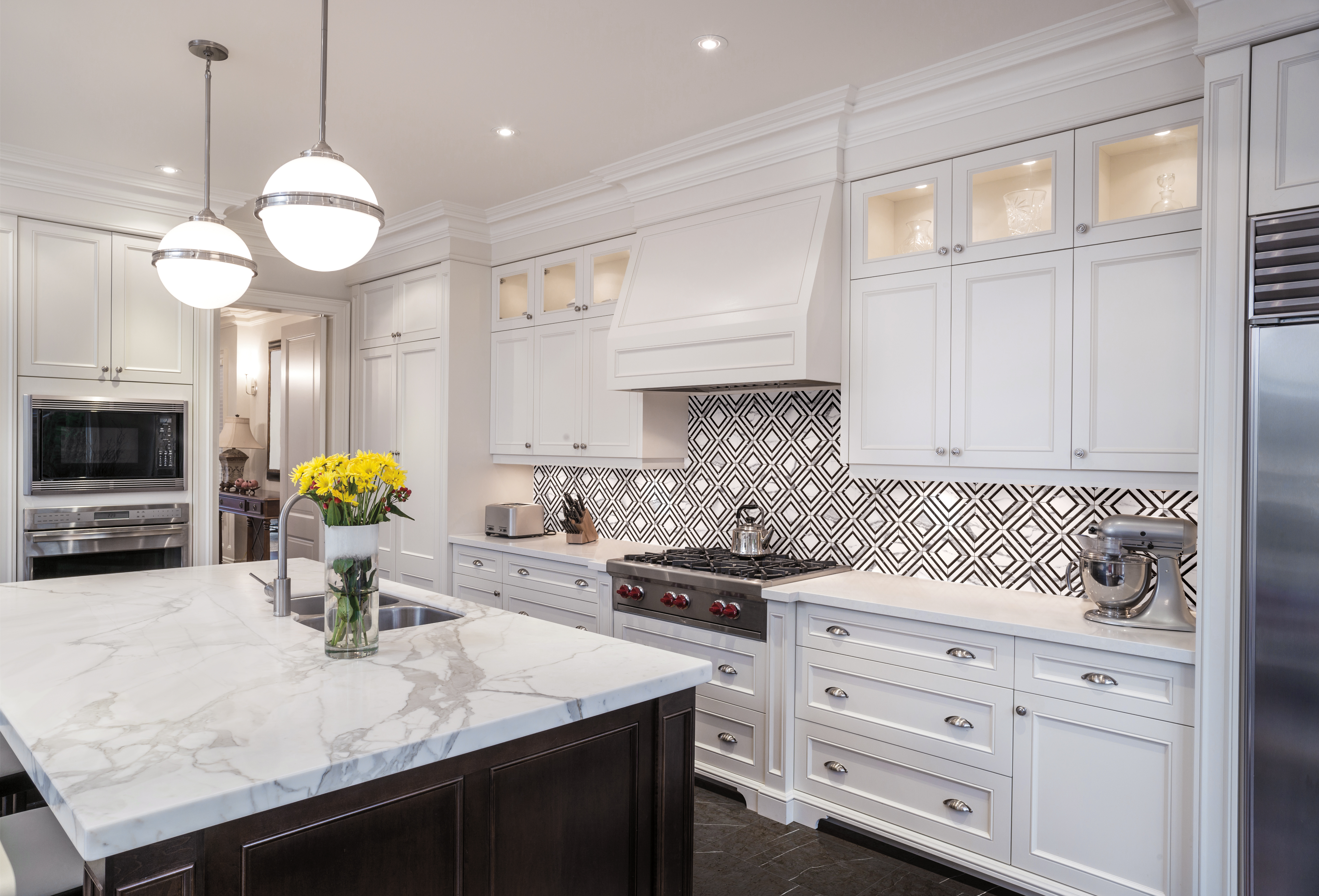Put your materials to the test. Take a sample of whatever countertop material you’re considering, and squeeze a lemon on it, spill some red wine, or dribble olive oil. Absorbent stones such as marble and limestone will stain, unlike a quartz like Cambria.
Stay away from leather. This goes for banquettes and barstools, which, like marble, will show every stain. Faux suedes and leathers (vinyls) have improved markedly in terms of appearance and durability. Indoor/outdoor fabrics, which are solution-dyed and can often be cleaned with bleach, are also very durable and come in a wide range of stylish patterns.
Choose finishes carefully. If you opt for stainless steel appliances, get a brushed finish, which won’t show streaks or fingerprints so easily. As for cabinets, painted finishes have become more durable, especially catalytic lacquers, like those used for painting cars, and you can opt for a low-sheen finish. And if wood gets gouged, it can be sanded down and refinished.
Match flooring to your lifestyle. Porcelain tile floors are the most practical flooring choice, and have come a long way in terms of styles and options. Hard species of wood floors, such as walnut, are also very forgiving, especially if they are hand-hewn, distressed, or reclaimed planks; however, the shinier the floor, the more scratches and dings will show. Designer Billy Beson recommends two coats of high-gloss polyurethane for a strong, hard finish, and then the final coat in a matte finish to reduce the sheen.

